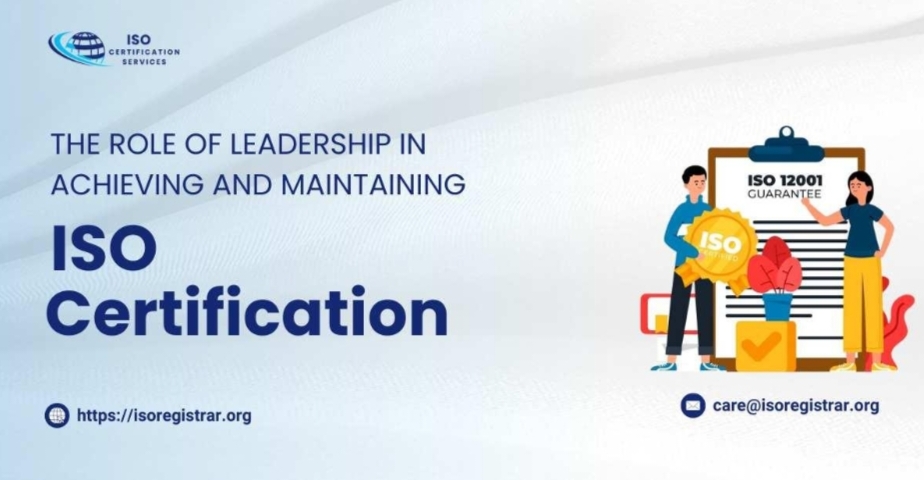ISO certification, such as ISO 9001 for quality management systems, ISO 14001 for environmental management systems, and ISO 27001 for information security management systems, signifies that an organization meets international standards in specific areas. Achieving and maintaining these certifications is not merely a matter of documentation and compliance; it requires a strategic approach led by committed and effective leadership.
Leadership plays a pivotal role in guiding an organization through the complex process of ISO Certification. Leaders are responsible for setting the vision, establishing priorities, allocating resources, and fostering a culture that values quality, sustainability, and security. This leadership involvement is crucial from the initial decision to pursue certification to the continuous improvement necessary for maintaining it.
Setting the Vision and Strategy
Leaders are instrumental in articulating the strategic importance of ISO certification to the organization. This involves:
Defining Objectives:
Leaders must clearly define the objectives of pursuing ISO certification and how it aligns with the organization’s broader goals. This includes understanding the market demands, regulatory requirements, and potential competitive advantages associated with certification.
Communicating the Vision:
Effective communication ensures that all employees understand the purpose and benefits of ISO certification, fostering a sense of shared responsibility and commitment. Leaders should convey how ISO certification will improve processes, enhance customer satisfaction, and drive the organization toward excellence.
Setting Clear Goals:
Establishing measurable goals and milestones helps track progress and keeps the organization focused on achieving certification. Leaders should ensure that these goals are realistic, attainable, and aligned with the overall strategic plan.
Resource Allocation and Support
Achieving ISO certification requires significant investment in terms of time, money, and human resources. Leaders play a key role in:
Providing Resources:
Ensuring that sufficient resources are allocated for training, process improvements, and the necessary documentation. This might include investing in new technologies, hiring external consultants, or upgrading existing systems to meet ISO standards.
Empowering Teams:
Delegating authority to capable managers and teams who will drive the certification process while providing continuous support and oversight. Leaders should empower employees to take ownership of their roles in achieving and maintaining certification, fostering a sense of accountability and involvement.
Training and Development:
Implementing comprehensive training programs to educate employees about ISO standards and requirements. Continuous education ensures that the workforce remains knowledgeable and capable of maintaining compliance with evolving standards.
Creating a Culture of Continuous Improvement
ISO standards emphasize continuous improvement. Leaders must:
Foster a Quality Culture:
Promote a culture that prioritizes quality, sustainability, and security in everyday operations. This involves setting high standards for performance, encouraging innovation, and rewarding efforts that contribute to improvement.
Encourage Employee Involvement:
Engage employees at all levels, encouraging their input and participation in process improvement initiatives. Leaders should create an open environment where employees feel comfortable sharing ideas and feedback.
Lead by Example:
Demonstrate commitment through their actions, showing that leadership is genuinely invested in maintaining the high standards set by ISO. This includes adhering to best practices, participating in training sessions, and being visible advocates for quality initiatives.
Monitoring and Evaluation
Effective leaders ensure that the processes put in place for ISO certification are continuously monitored and evaluated. This involves:
Regular Audits and Reviews:
Conduct regular internal audits and management reviews to ensure compliance and identify areas for improvement. Audits should be systematic, transparent, and aimed at uncovering both strengths and weaknesses in the system.
Responsive Leadership:
Being proactive in responding to audit findings and making necessary adjustments promptly. Leaders should be open to feedback and willing to make changes to improve processes and address non-conformities.
Performance Metrics:
Establishing and monitoring key performance indicators (KPIs) related to ISO standards. These metrics help track progress, identify trends, and ensure that the organization remains on course toward continuous improvement.
Sustaining Certification and Driving Long-Term Success
Achieving ISO certification is only the beginning; maintaining it requires ongoing commitment and effort. Leaders must:
Embed ISO Standards into the Organizational Culture:
Ensure that ISO principles become an integral part of the organization’s daily operations. This involves integrating ISO standards into policies, procedures, and performance evaluations.
Promote Continuous Learning and Adaptation:
Encourage ongoing education and adaptation to new developments in ISO standards and industry best practices. This helps the organization stay ahead of changes and continuously improve.
Leverage Certification for Strategic Advantage:
Use ISO certification as a marketing tool to enhance the organization’s reputation, attract new customers, and enter new markets. Leaders should highlight the benefits of certification in communications with stakeholders, customers, and partners.
Also, Read: ISO Certification Online – Types of ISO Certification
Conclusion
The role of leadership in achieving and maintaining ISO certification is multifaceted and critical. Leaders must be visionary, resourceful, supportive, and committed to fostering a culture of continuous improvement. Their active involvement ensures that the organization not only achieves ISO certification but also sustains and leverages it for long-term success. Effective leadership transforms ISO certification from a compliance exercise into a strategic asset that enhances the organization’s reputation, operational efficiency, and competitive advantage. Through clear vision, resource allocation, cultural development, and continuous evaluation, leaders ensure that ISO certification drives the organization toward sustained excellence and growth.



